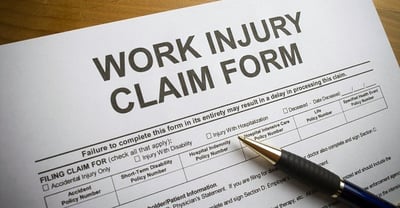 Musculoskeletal disorders are injuries that impact how we move and usually caused by the repetitive stress and overuse of our muscles, ligaments, and tendons.
Musculoskeletal disorders are injuries that impact how we move and usually caused by the repetitive stress and overuse of our muscles, ligaments, and tendons.
Over 66% of people dealing with MSDs say their jobs caused or aggravated their injuries. Not only do people suffer but there is a huge economic cost associated with these disorders of movement.
US companies spend billions on the direct costs of MSDs and five times more than that on indirect costs (the combination of Workers' Comp costs, lost work time and worker productivity, overtime expenses, legal, finding work replacements, etc.)
According to the Bureau of Labor Statistics, MSDs are responsible for 30% of all Workers' Comp costs. $1 of every $3 spent on workers' compensation stems from insufficient ergonomic protection.
The most glaring statistic?
Nearly all MSDs are preventable.
Employers have made efforts in the past to try to prevent MSDs in the workplace, with everything from back and knee braces for industrial workers to standing desks and ergonomic keyboards for office employees.
Many have instituted safety training meetings and some have offered pre-work stretching videos or even classes.
But the problem persists.
Workers in industrial settings are dealing with physical stress on a daily basis. If you were to drop your pen right now, you'd most likely bend over to pick it up and not lift with your legs... because it's easier. Multiply that movement by 100 times a day for 350 days in a year and, eventually, you'll be in a lot of pain.
Workers are all unique and they may have poor work practices, fitness, nutrition, or health and just one or a combination of all the factors will lead to MSDs.
Also, keep in mind these employees are doing work that adversely impacts them — dealing with heavy weights, strong forces, repetition, heat and cold, vibrations, and awkward postures.
Even people in great shape will get tired on the job and when you get tired, you increase your risk of injury.
 Many companies are realizing they need to do more. Amazon has started a program for their distribution workers where they provide stretching and stress-reduction videos.
Many companies are realizing they need to do more. Amazon has started a program for their distribution workers where they provide stretching and stress-reduction videos.
OSHA has recommended implementing an ergonomic process that uses the principles of a safety and health program to address MSD hazards.
What is concerning is that most companies think they're doing enough when they start an ergonomic process.
Many introduce a nursing hotline, making them feel like they are helping to treat the MSD issue. The problem is that this method is reactive. They're dealing with MSDs after the worker has developed a pain or injury.
Next, employers might try something similar to Amazon's approach — offering generic stretching or yoga videos — or introduce flex and stretch classes. The problem is that, as mentioned, not everyone is the same. And they respond differently to broad one-size-fits-all programs.
What's the optimal ergonomic process?
Find a solution that offers ergonomic evaluations for each employee. One that covers jobsite assessments that can root out the work practices that cause MSDs. And one that can help triage a minor MSD before it can become something major.
A program that can also offer stretch and flex programs based on an individual's need rather than the generic approach.
Finally, find one that can offer job coaching, nutritional and footwear suggestions, custom fitness conditioning, sleep programs, and personalized work-break recommendations.
And it should be offered to every employee, on every shift, and at each location.
But... that sounds expensive, doesn't it?
Well, we at Healthy Roster have good news for you! Set aside time to talk to us about how we can help you reduce your Workers' Comp costs, create a culture of safety, and improve productivity — and even eliminate those employee walkouts for unnecessary ER visits!
